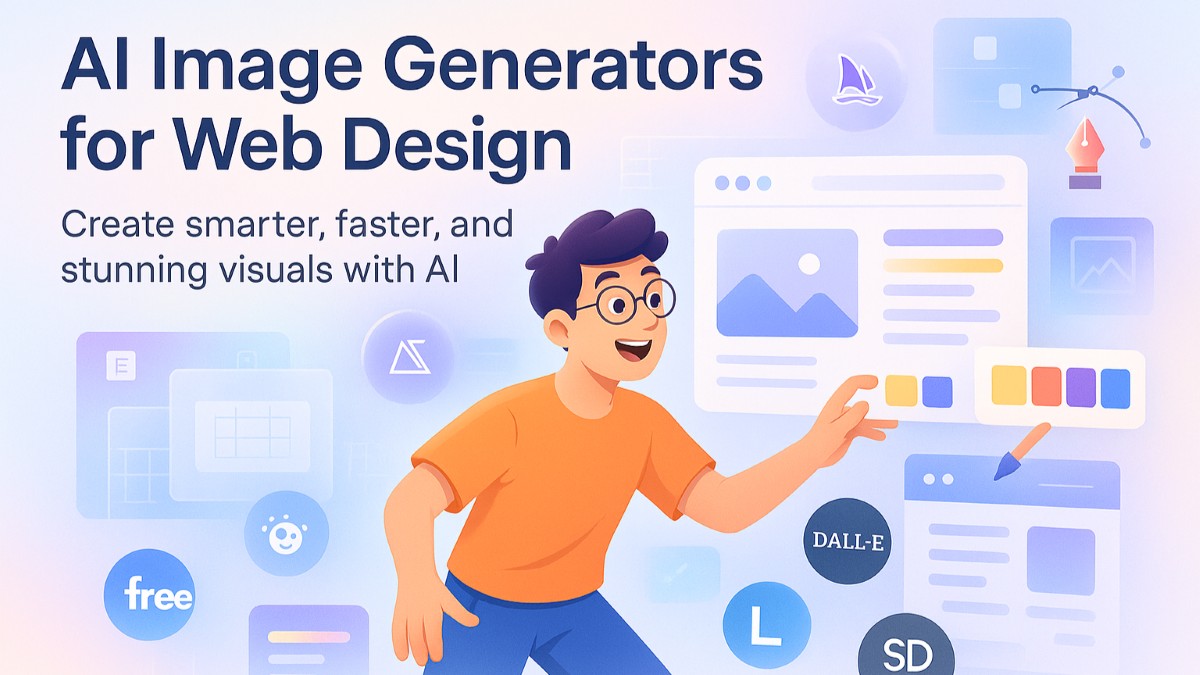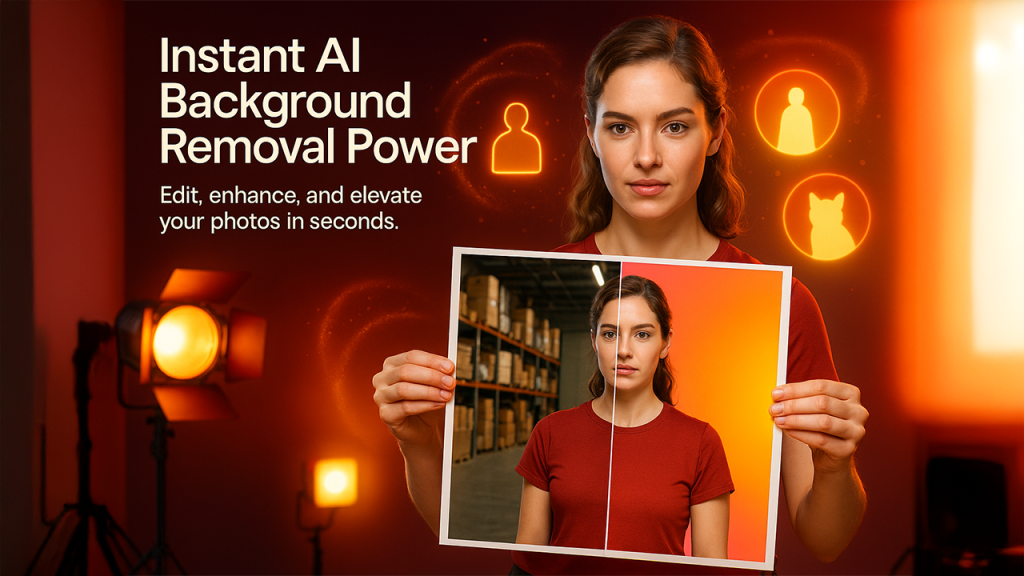Visual content in web design has never been so crucial. Interactive photographs attract attention, send brand messages, and direct user experience. By 2026, artificial intelligence has disrupted the way designers source and create such key visuals. AI image generators provide creators with the power to curate original and quality graphics in a completely new speed and efficiency.
These newfangled tools take the use of some high-end algorithms so as to convert text-based prompts into breathtaking visual resources. They do not require large libraries of stock photos or complicated manual designs.
Top AI Image Generators for Web Design
1. Elementor AI Image Generator
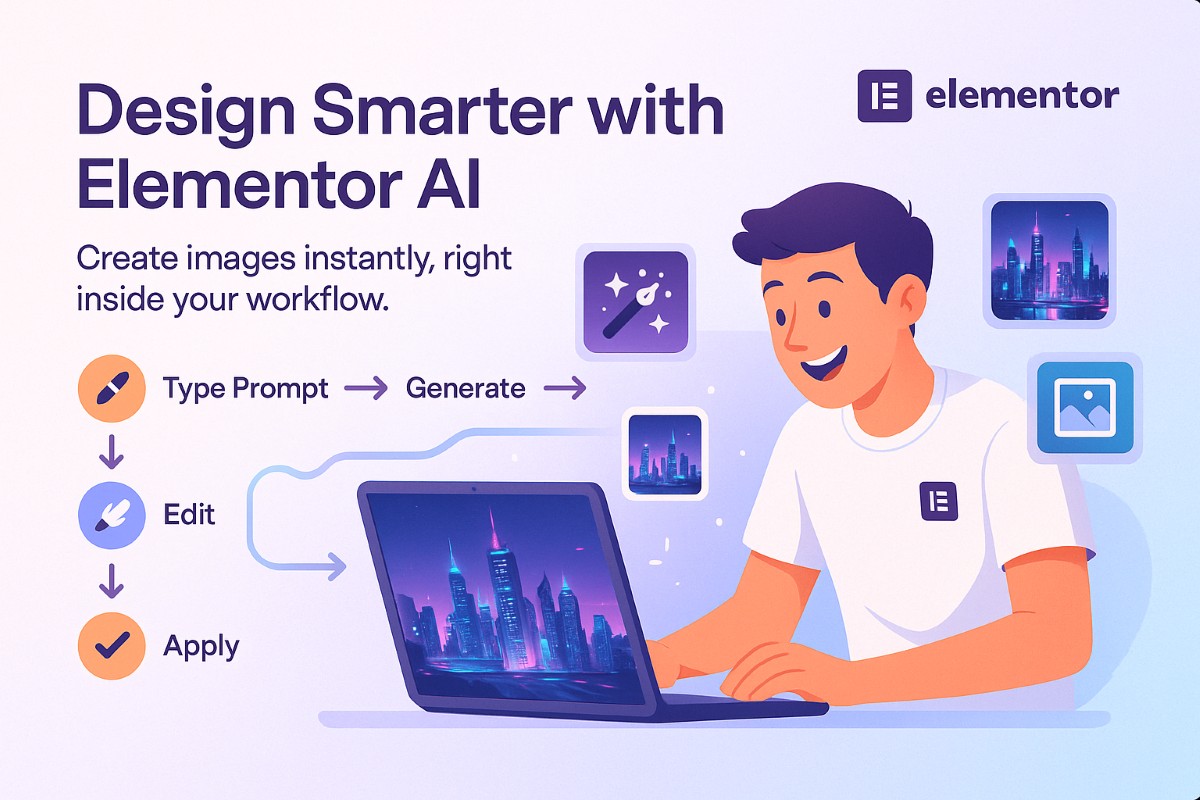
Elementor, a leading WordPress page builder, now includes a powerful Elementor AI image generator. Such integration changes the game of web designers. It enables you to produce original visual resources right in your design flow. You do not need to run between two or more tools anymore.
This in-built AI utility enables users to create pictures with text inputs. Alternatively, there is the possibility to upload previously created images, whose manipulations and changes are determined by the AI. Such faculties as Generative Fill make it possible to add and remove objects easily. It is also easy to remove the background and replace it. This seamless integration in Elementor makes the whole web design process simplicity.
For example: A web designer needs a hero image for a new landing page. They enter how to find futuristic city skylines at sunset, cyberpunk style, neon lights into the AI of Elementor instead of going through stock photos yourself. The AI has four options in four minutes. To add a flying car, the designer uses Generative Fill, which allows her to refine one of those choices right on the page.
2. Midjourney
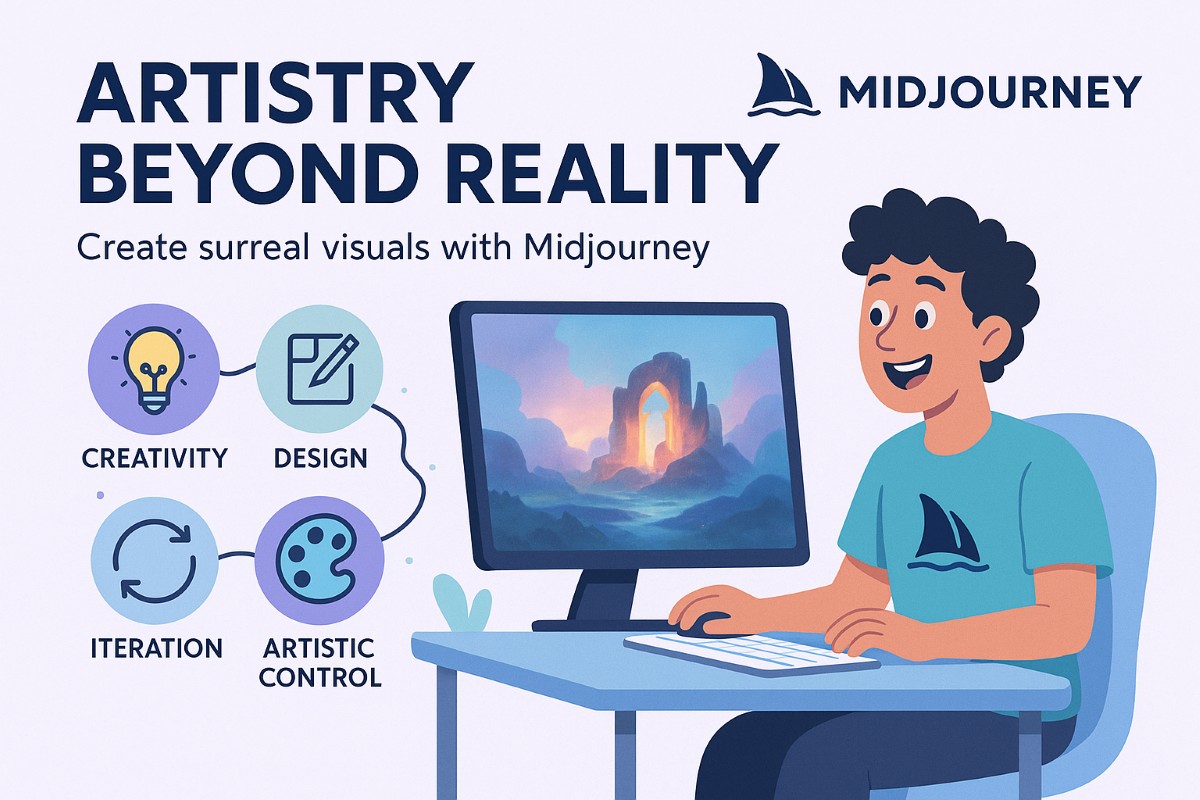
Midjourney is famous because of its high-quality and artistic image formation. It is good at making aesthetically beautiful and frequently unrealistic images. Midjourney can also be used by web designers to create distinctive header graphics, blog post thumbnails, and conceptual art. Its results often have a painterly character.
Midjourney is run as an interface on Discord, although a web-based interface is being developed. Iterative commands enable users to refine their prompts. The tool has a great deal of stylistic control. Those that enjoy very stylized or artistic imagery would prefer it. The strong point of Midjourney is that it interprets prompts creatively.
For example: A boutique agency needs a surreal, dreamlike background for a creative portfolio website. They prompt Midjourney with text such as, ethereal landscape, glowing ancient ruins, pastel colors, and misty atmosphere. The AI has come up with several solutions. This is the perfect artistic feel that they want to give with their online image.
3. Adobe Firefly
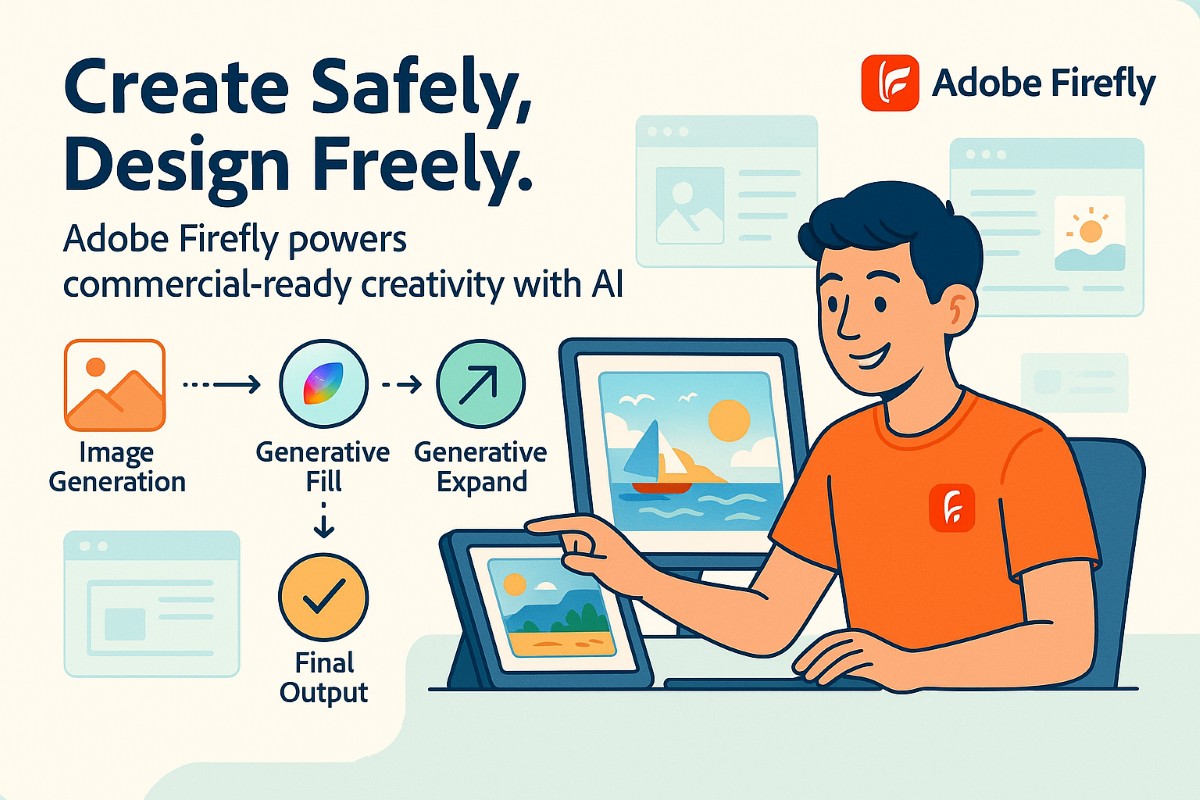
Adobe Firefly is a generative AI product by Adobe. It takes an interest in business-level safety and a non-disruptive connection with Creative Cloud programs. Adobe Stock and the public domain pictures are used to train Firefly. This renders it a safe alternative in commercial web design applications.
Firefly does not require using Photoshop or Adobe Express to create text-to-image generation. It provides such features as Generative Fill and Generative Expand. The tools allow for non-destructive editing and growing images. Firefly is keen on copyright compliance. This gives professional designers peace of mind.
For example: A marketing agency needs to create banner ads of varying sizes for a client. They create a center picture in Firefly. After that they utilized Generative Expand in Photoshop. This is fast and adjusts the image accordingly to various aspect ratios preserving the image form. The entire generated content is commercially secure. To further streamline your web design workflow, take advantage of free website migration when transitioning your creative projects to a new hosting platform.
4. ChatGPT (via DALL-E 3)
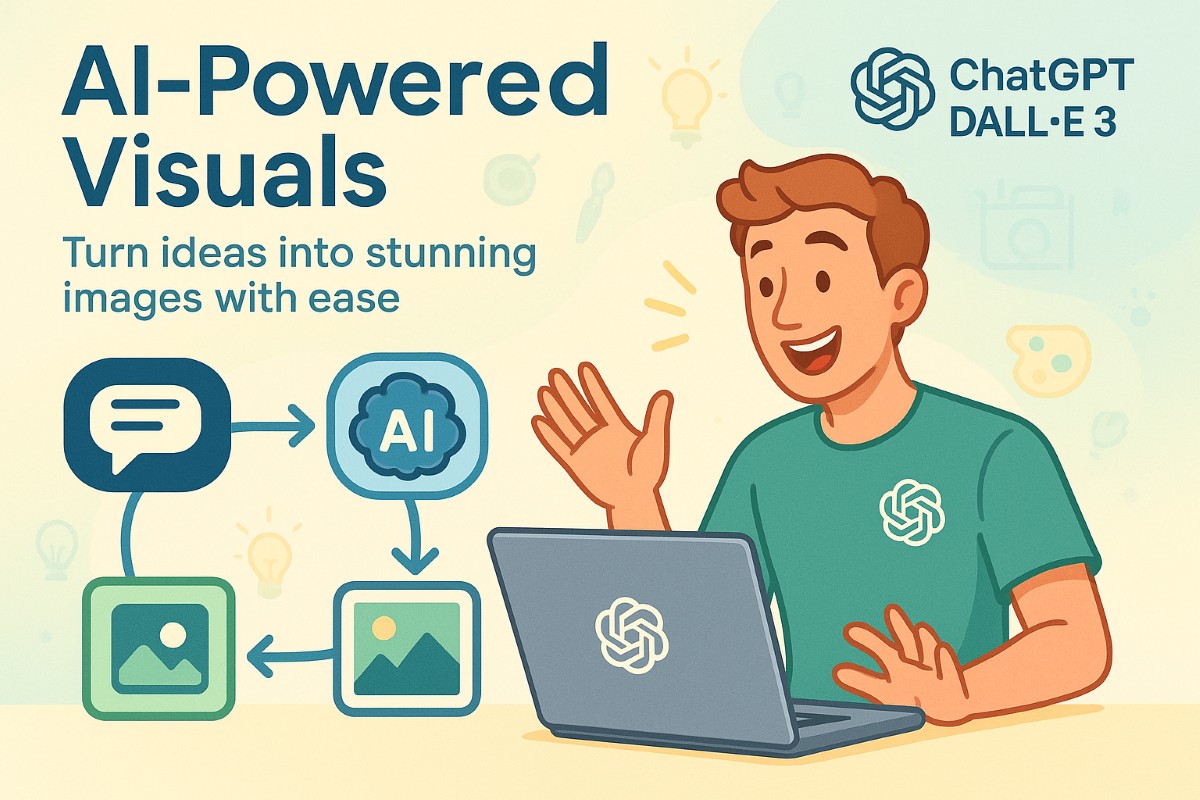
DALL-E 3 is the state-of-the-art image generator by OpenAI. It is highly combined with ChatGPT in conversationally prompt tailoring. This makes it easy to revise their ideas. DALL-E 3 is very successful in thinking of subtle requests, as well as forming very meaningfully coherent responses in a picture. It is realistic and rich in composition.
DALL-E 3 is very intuitive as it is integrated with ChatGPT. There is a possibility to chat with the AI to streamline prompts or ask for changes. It generates high quality images with amazing contextual knowledge. A perfect example of the benefits of DALL-E 3 is in forming a particular scene or object to be used as a web asset. It adequately understands complicated requests.
For example: A blog needs an image for an article on sustainable technology. The author sends the following prompt to ChatGPT: "Create a photorealistic picture of a solar-powered intelligent house in a green environment, golden hour, and minimalistic style." DALL-E 3 generates an accurate picture. The author then requests; add a drone carrying a package.
5. Stable Diffusion
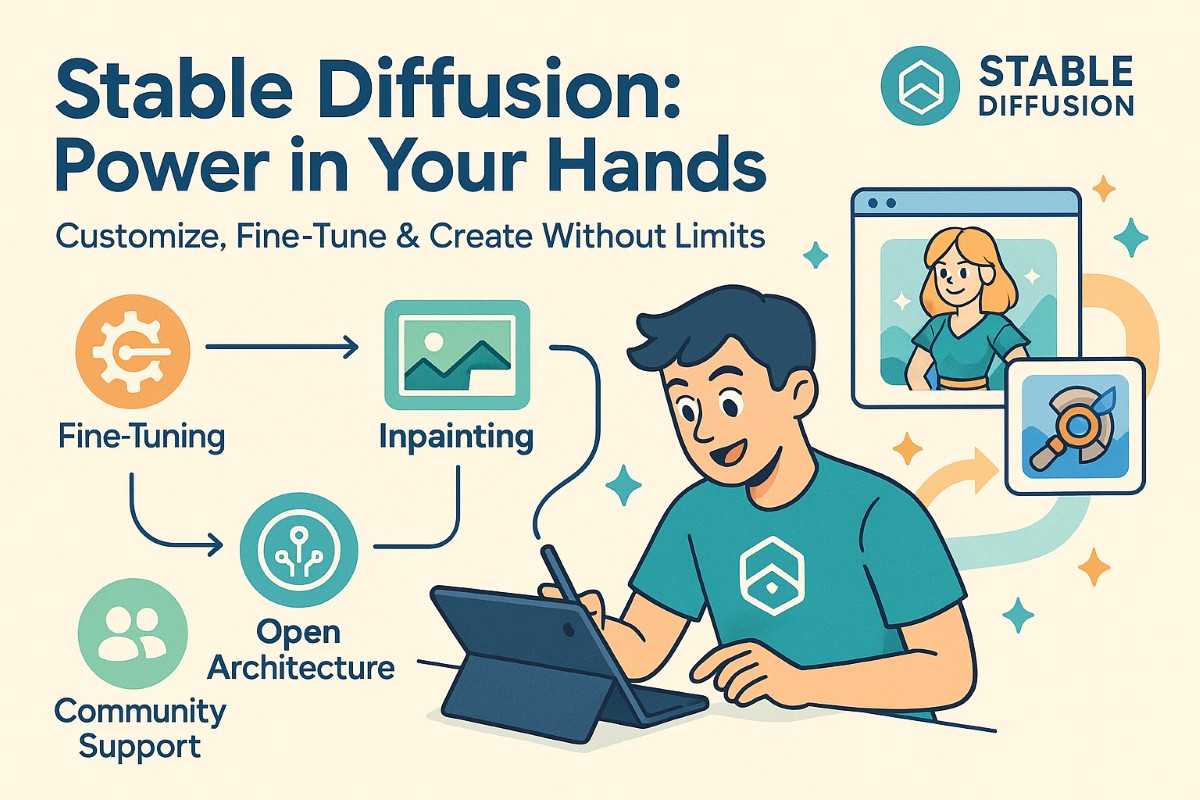
Stable Diffusion is a community-owned image generator for AI. It provides ultimate preparedness and customization. It has an open architecture, and it may be run locally or on different third-party platforms. This gives web designers immense freedom.
Stable Diffusion supports custom datasets fine-tuning. This facilitates image creation in terms of niches. It facilitates inpainting and outpainting to manipulate large parts of the image. It has a large community that helps in the creation of a rich ecosystem of tools and resources. Such control designates it as a favorite among power users.
For example: A specialized e-commerce site for fantasy gaming gear needs unique item illustrations. They tune up an exciting game art Stable Diffusion model. It creates thematic, branded images across all of their product offerings. Such a degree of customization can be very useful.
6. Ideogram AI
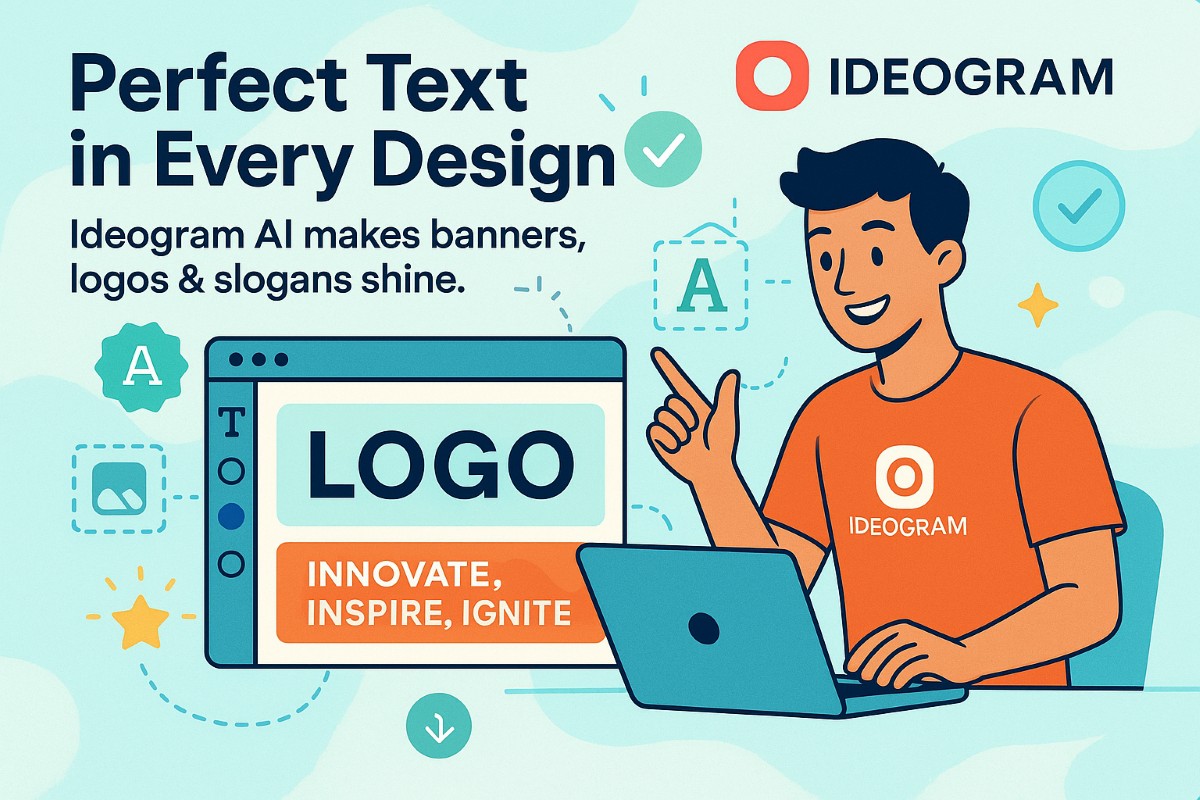
Ideogram AI is meant to produce AI images with highly precise text rendering. This is a big problem for most AI image generators. It is essential in the realm of web design such as banners, logos, or hero images including incorporated slogans. Where others fail, ideograms succeed.
Ideograms enable users to define text in their prompts. The AI then tries to fit that text, so it is legible on the generated image. It offers different artistic styles and font treatment. This makes it impossible to assess, but the designers require text-dense visuals. Such emphasis on typography is an obvious distinction.
For example: A startup needs a website banner with their new slogan, "Innovate, Inspire, Ignite." Ideogram AI is used by them. They provoke it through the name slogan and a wanted abstract, modern art form. The AI produces those images in which the text is incorporated perfectly. This produces an effective web image.
7. Leonardo AI
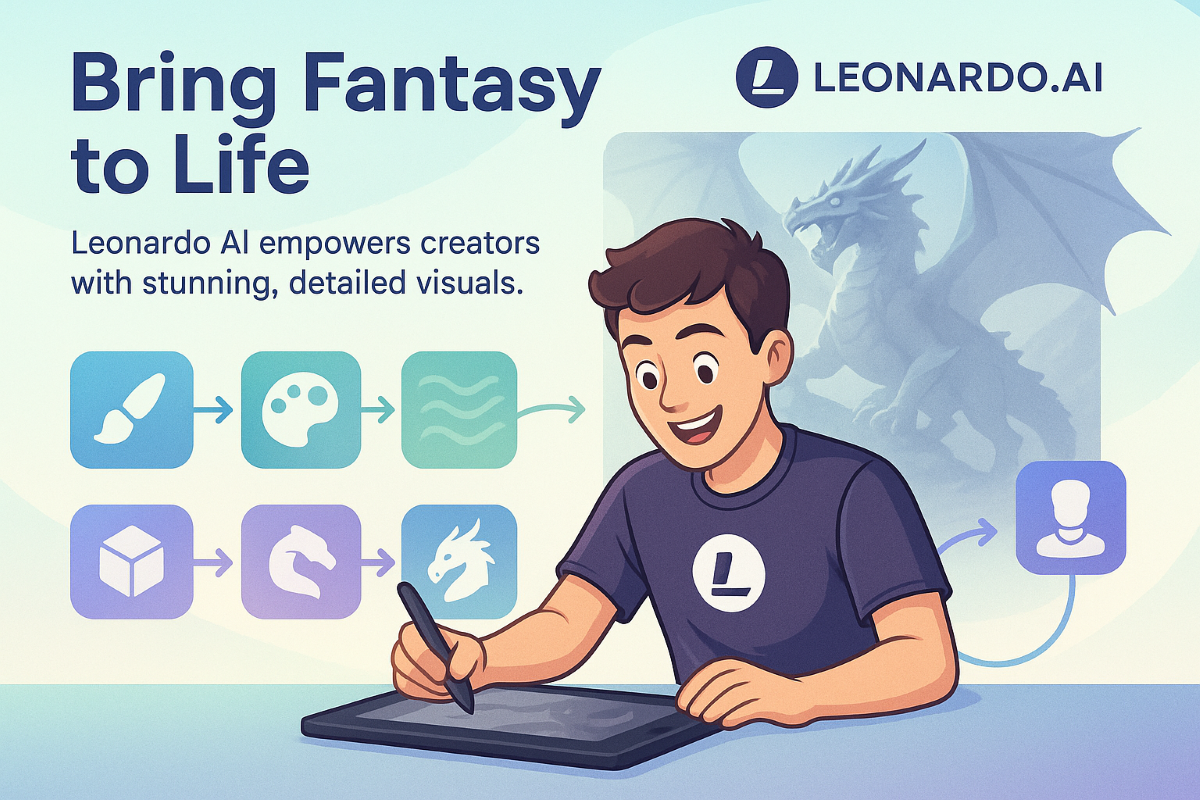
Leonardo AI specializes in fine fantasy and sci-fi art. Game designers and concept artists are fond of it. Nonetheless, it can achieve intricate textures, characters, and environments. They can be useful resources for themed web designs.
Leonardo AI provides a wide level of image production control. There are many AI models and parameter tuning opportunities for users. It allows for weighting prompt and image-to-image generation. This enables very particular creative work. It is great in producing realistic and stylized art.
For example: A gaming news website needs a header image for an article on new RPGs. They install Leonardo AI and get an image of a heroic knight fighting a dragon on a dark fantasy background. The detailed output perfectly fits the article's theme.
8. The Microsoft Designer (DALL-E 3)
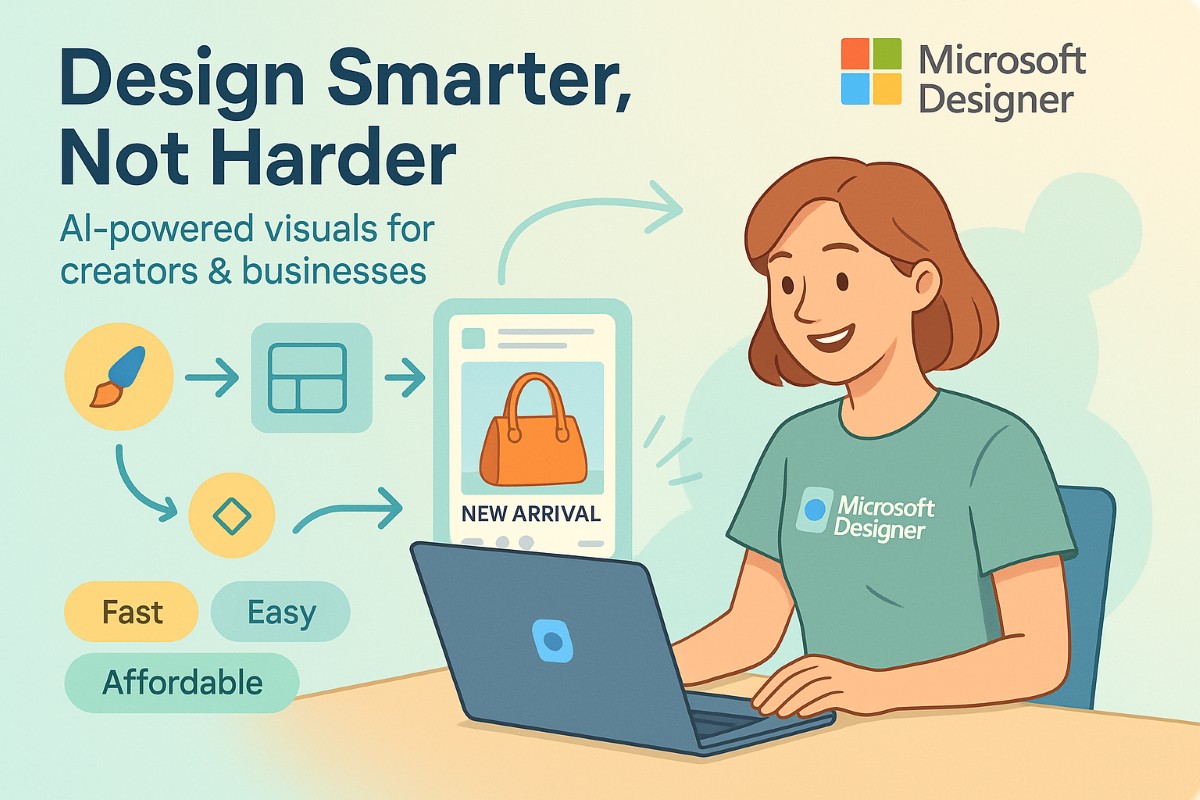
Microsoft Designer is a friendly graphic design software that uses AI. It takes advantage of DALL-E 3 because of its image-generational capacity. This renders it affordable to people and small enterprises. It simplifies the creation of various digital assets, including web graphics.
Microsoft Designer has easy text-to-image generation. It provides many templates of social media posts, banners and slides. Its accessibility helps users in the design process. This tool aims to make AI image creation easy for everyone. It is an ideal option in rapid visual content.
For example: A small online boutique needs a new promotional graphic for their website. They take Microsoft designers. They make it generative by asking it to produce a product picture of a fashionable handbag in a plain setting against soft light. Then they can choose text overlap in Designer.
9. Recraft
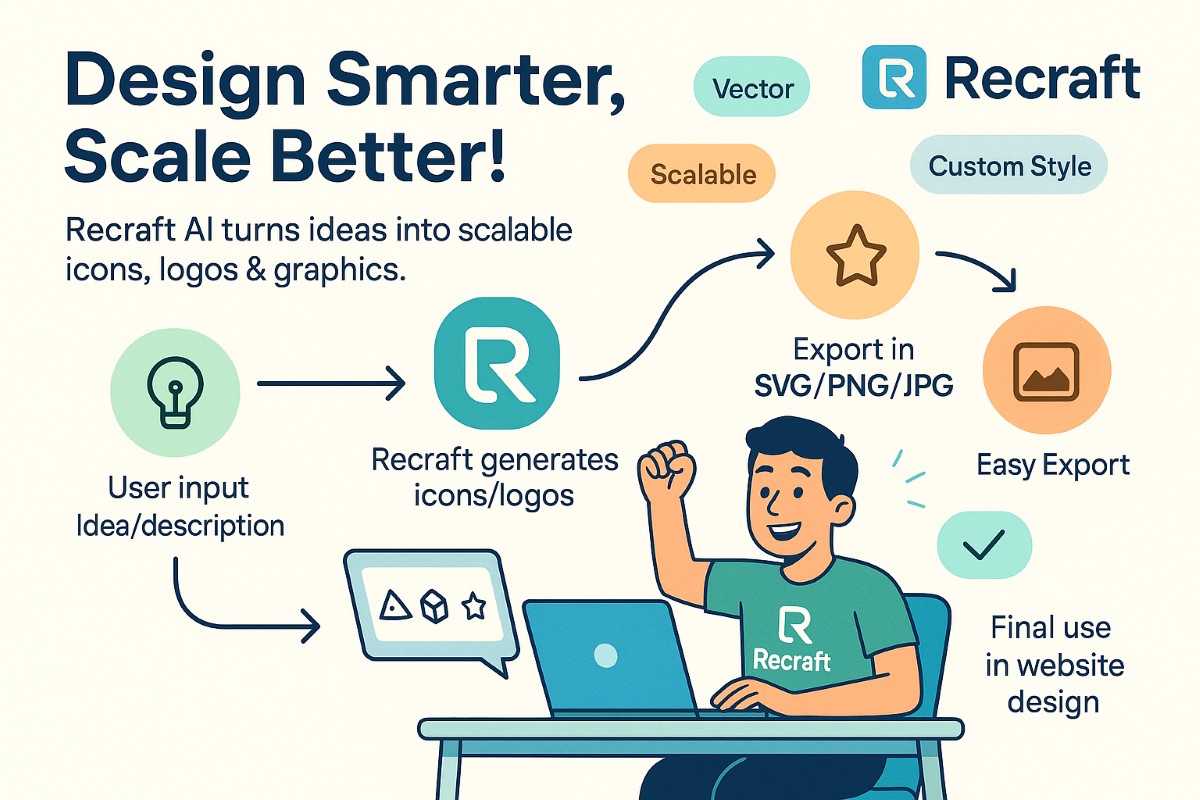
Recraft is an AI image generator, which is narrowly used in graphic design. It specializes in creating great vector and raster graphics. This renders it unusually helpful in developing scale-able web imagery such as icons, drawings, and logos. Recraft is characterized by accuracy and control.
There is the ability to use particular styles, or the user can make his/her style using recraft. It provides control over the level of detail. It is simple to edit produced graphics. It aids export in formats such as SVG, PNG, and JPG. This versatility plays a critical role to the various web design requirements.
For example: A tech startup needs a set of minimalist icons for their website's feature section. They apply Recraft. They tell what each icon should look like, including a "flat design, vector art" style. Recraft produces scalable icons that are made using SVG. These fit well into their web design that is clean.
10. DeepAI
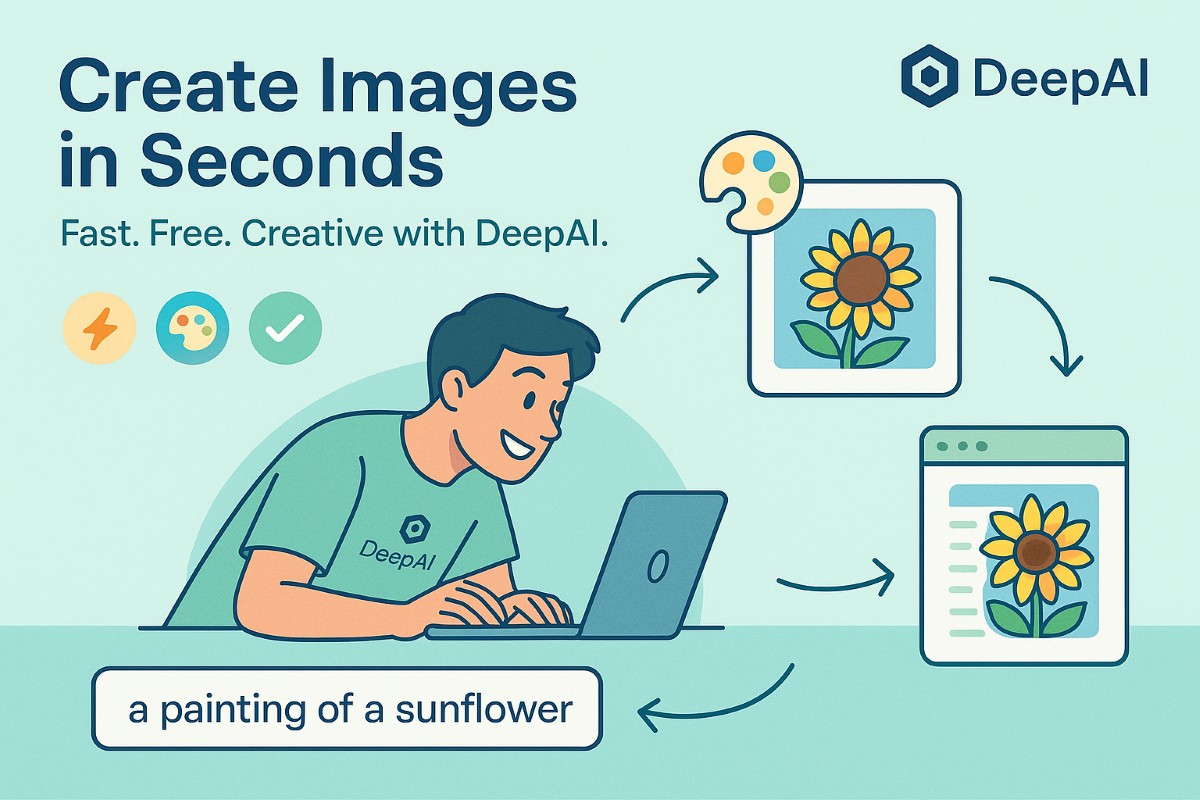
DeepAI is a free image generator on the web aimed at simplicity and speed. It offers an easy text to image process. This makes it an excellent choice for quick visual brainstorming and content creation for web pages. It favours different forms of art.
The DeepAI helps the user to merely explain their thoughts and choose the style. It does not need to sign-up to produce images within seconds. It provides various styles of art, ranging from realistic to abstract. All the images that are generated are accompanied by commercial rights to use. This results in it being an extremely easy tool.
For example: A content creator needs a quick illustrative image for a blog post. It is on DeepAI where they feed it with an abstract idea of digital transformation and vibrant colors, then choosing a digital art style. A picture is immediately created, which can be placed on their blog.
11. Photosonic by (WriteSonic)
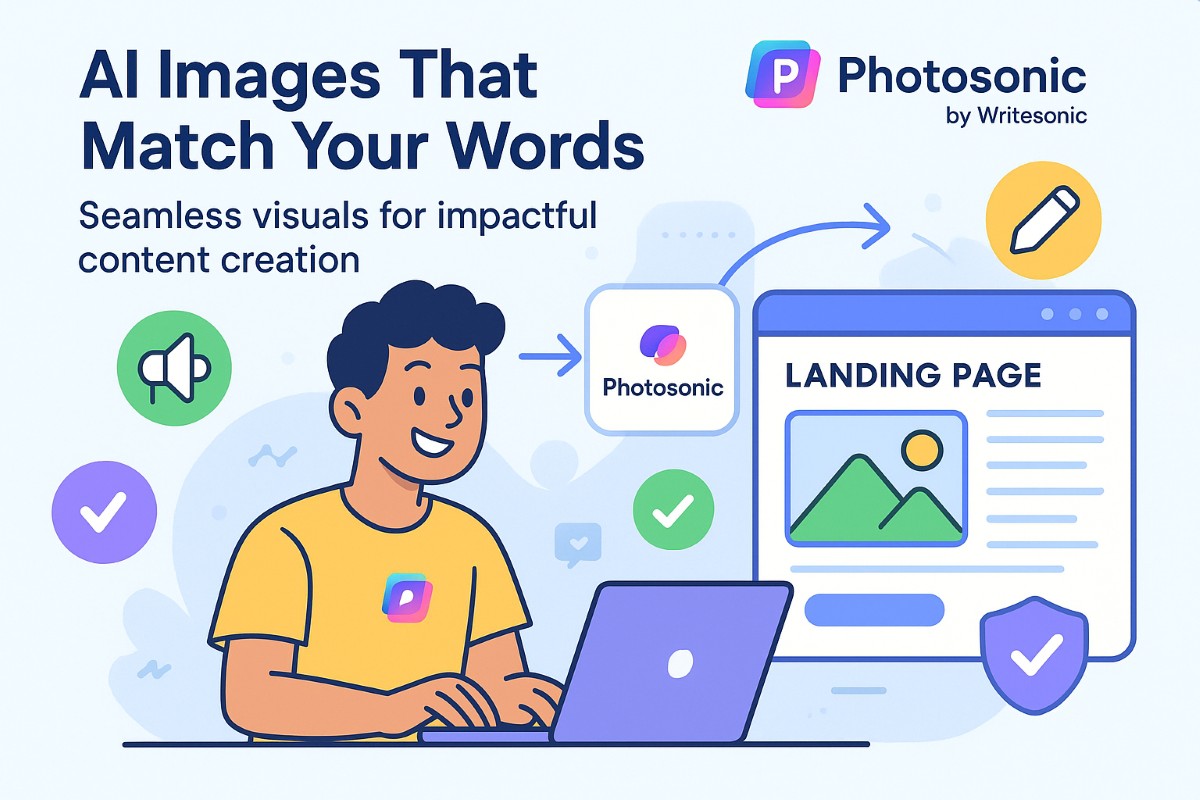
Photosonic, by WriteSonic, is an AI image generator integrated within a broader content creation suite. It specializes in creating both marketing and content images. This makes it useful for web designers working on content-heavy websites or landing pages. It seeks to supplement text AI tools.
Photosonic gives the ability to generate images based on the text description. It offers different styles and aspect ratios. Integration into WriteSonic, AI-based writer, will contribute to making visual content consistent with the textual one. It's designed for efficiency in content creation. This qualifies it to be useful for detailed web projects.
For example: A digital marketing agency is creating a landing page for a new product. They use WriteSonic to get a copy. They then go on to create an AI-generated image (in Photosonic) that is an ideal fit regarding tone and message of the AI-generated text.
12. Freepik AI Image Generator
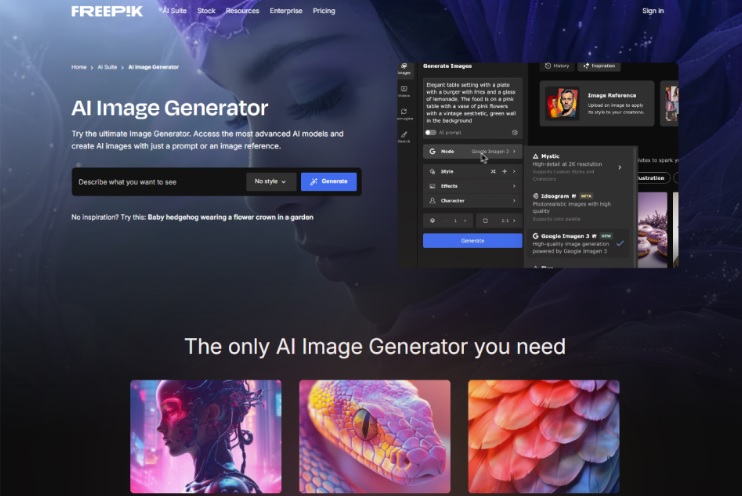
Freepik AI Image Generator is built for practicality. It creates clear, high-quality images that work well for digital content, especially when you need fast results that still look professional. Users can write short, simple prompts and get visuals ready to use for social media, email banners, product ads, or blog illustrations.
The platform focuses on visual consistency. It leans toward realistic, usable content instead of surreal or abstract styles. Designers who want something polished without too much experimentation often prefer it.
For example: A small e-commerce team needs a set of seasonal banner images for a back-to-school campaign. They prompt the AI with kids walking to school, fall colors, backpacks, happy mood. The generator provides several clean, friendly visuals that match the tone of their site and are ready to drop into their layout with no edits needed.
Conclusion
The era of AI image generators has changed the web design world completely. These programs offer unmatched speed, creativity, and efficiency. They empower designers to produce unique, high-quality visuals that elevate any website.
The selection of an optimal AI image generator depends on a particular case, yet the built-in solution provided by Elementor is the most convenient and powerful tool that could be applied by web designers. In the future, adoption of these AI tools in 2026 will be critical towards remaining competitive, and innovative in an ever-advancing digital world.

